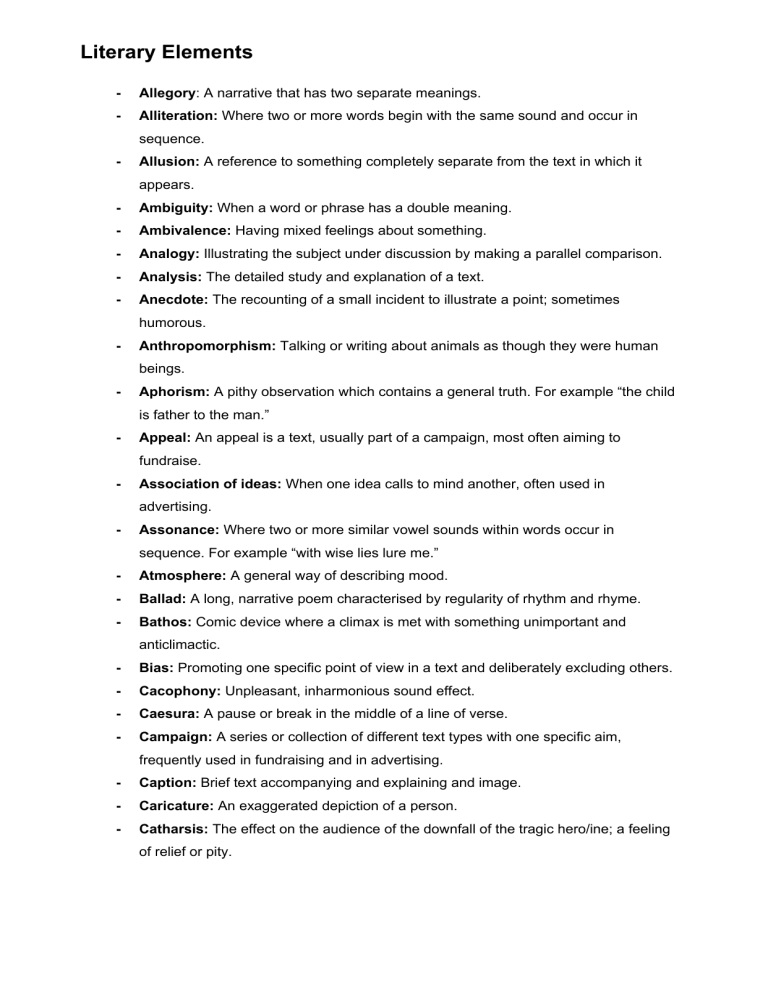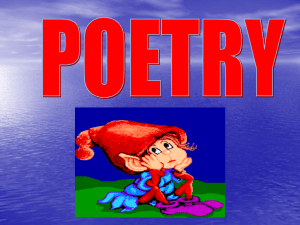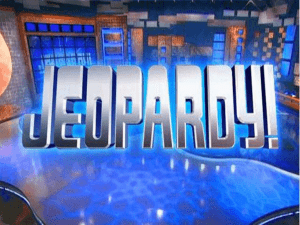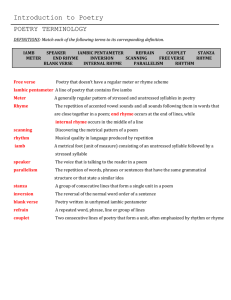
Literary Elements - Allegory: A narrative that has two separate meanings. - Alliteration: Where two or more words begin with the same sound and occur in sequence. - Allusion: A reference to something completely separate from the text in which it appears. - Ambiguity: When a word or phrase has a double meaning. - Ambivalence: Having mixed feelings about something. - Analogy: Illustrating the subject under discussion by making a parallel comparison. - Analysis: The detailed study and explanation of a text. - Anecdote: The recounting of a small incident to illustrate a point; sometimes humorous. - Anthropomorphism: Talking or writing about animals as though they were human beings. - Aphorism: A pithy observation which contains a general truth. For example “the child is father to the man.” - Appeal: An appeal is a text, usually part of a campaign, most often aiming to fundraise. - Association of ideas: When one idea calls to mind another, often used in advertising. - Assonance: Where two or more similar vowel sounds within words occur in sequence. For example “with wise lies lure me.” - Atmosphere: A general way of describing mood. - Ballad: A long, narrative poem characterised by regularity of rhythm and rhyme. - Bathos: Comic device where a climax is met with something unimportant and anticlimactic. - Bias: Promoting one specific point of view in a text and deliberately excluding others. - Cacophony: Unpleasant, inharmonious sound effect. - Caesura: A pause or break in the middle of a line of verse. - Campaign: A series or collection of different text types with one specific aim, frequently used in fundraising and in advertising. - Caption: Brief text accompanying and explaining and image. - Caricature: An exaggerated depiction of a person. - Catharsis: The effect on the audience of the downfall of the tragic hero/ine; a feeling of relief or pity. - Characterisation: The way a writer creates a character in order to convince the reader. - Colloquial: Informal language; often specific to a particular social, local or age-related group. - Comedy: A broad literary genre which ends happily or satisfactorily. - Comic exaggeration: Exaggeration for humorous effect. - Commentary: Close, detailed description of a literary or non-literary text. This can be either written or oral and in both cases is structured as an essay. - Connotation: The connotations of a word are its secondary meanings, overtones and implications. - Consonance: The repetition of consonant sounds at the end of a word often found in poetry and in advertisements. - Conventions: The particular aspects of language use that typify a text type are called its language conventions. They are the aspects of language use you would expect to find in a given text type. For example, persuasive devices in an advertisement. - Critique: A reasoned criticism of a piece of writing. - Dialogue: A conversation between two people. - Diction: Choice of vocabulary and phrases; for instance, can be conversational, rhetorical, formal or informal. - Dissonance: Organisation of words that is not harmonious but discordant. - Dramatic Irony: Occurs in plays where the audience knows more about the events than the characters do. As such the characters do not understand the magnitude of what they are saying, but the audience does. - Editorial: The article in a newspaper or journal which expresses the publication’s opinions on the news. - Elegy: A formal literary tribute to someone who has died. - Emotive: Creating emotion in the reader; not simply describing emotion. - End rhyme: Where rhyme occurs at the end of lines of verse. - Enjambement: Where one line of poetry runs into the next. - Eye rhyme: Where words look the same but sound different. - Fable: A story with a moral, intending to teach a lesson. George Orwell called Animal Farm a fable. - Figurative language: Language that is not literal. - Form: In poetry, usually the arrangement of lines and stanzas. - Genre: The word used to describe a literary text type. - Homonym: A word with more than one meaning, often used in puns. - Homophone: A word that sounds the same as another but is spelt differently. - Hyperbole: An extreme exaggeration. - Iambic metre: A rhythmical pattern of two syllables with emphasis on the second. One unit of iambic metre is called a foot. - Iambic pentameter: Five iambic feet - Imagery: Words that create a picture in the reader’s mind, to make the thing being described clearer or more vivid. - Internal rhyme: Where rhyme appears in the middle of lines. - Interpretation: An understanding of the meaning of a text. - Irony: Saying one thing and meaning another. - Layout: The way a text is presented on a page (applies to media rather than literary texts). - Lexical set: Repeated reference to one kind of imagery to create an overall effect. - Lexis: Vocabulary. - Liturgical: Language typical of prayer and religion. - Lyrics: The words of a song. - Lyrical: With song-like effect. - Metaphor: A comparison in which the thing being described is said to be something else to make the description more vivid. - Metre: Rhythm or beat. - Monologue: A piece of writing which is meant to be spoken by one person. - Mood: The feeling that is created in a text. - Motif: A recurring idea or image in a text. - Narrative: Story. - Narrative verse: Poetry that tells a story. - Narrative voice: The point of view in which the plot is narrated. - Narrator: The person who tells the story. - Onomatopoeia: Where a word sounds like the sound it is describing. - Oxymoron: A description of something which appears to be its opposite, or impossible. e.g. an open secret. - Paradox: A statement which seems to be self-contradictory but upon reflection is logical - e.g. there’s no success like failure. - Parody: An intimidation of a person intending to ridicule them. - Pastoral: Describing a rural scene in an idealised, simple way; attributing idyllic qualities to the countryside and innocence to those who live there. - Pathos: When a feeling of pity is created in a visual or written text. - Personification: Giving human characteristics to something which is not human. Example: The sunlight danced on the rippling water. - Persuasive language: Language used to encourage the reader to think or act in a particular way. - Plot: The plan and development of a narrative. - Protagonist: The main character in a literary work. - Pun: A play on words. - Quatrain: A four-line stanza. - Rationale: A reasoned explanation of a text. - Refrain: A repeated section, usually in poetry. - Repetition: Saying or writing something more than once for a specific effect. - Rhetoric: The conventions of speaking for an audience. - Rhyme: The repetition of similar or identical sounds at the end of, or within, lines of poetry. - Rhyme scheme: The pattern of rhyme in a poem, usually at the end of the lines. - Rhyming couplet: A pair of consecutive lines in a poem which rhyme with each other. Sonnets end with a rhyming couplet. - Rhythm: A pattern of strong and weak beats. - Satire: The ridicule of something the writer dislikes. - Sensationalise: Describing something in an exaggerated way to shock and engage the reader, frequently a characteristic of journalistic writing. - Setting: Where and when the events of a story, play, or poem, take place. - Simile: A comparison in which the thing being described is said to be like another in order to make it more vivid. - Soliloquy: A dramatic convention in which one person, alone on the stage, speaks their thoughts aloud. - Sonnet: A poem with fourteen lines, ending with a rhyming couplet. - Stereotype: The attribution of certain characteristics to a specific group of people, often the product of prejudiced ideas. - Stress: Rhythmical emphasis. Structure: The organising and ordering of ideas so that they are effective. Style: The features that characterise a work, text type, publication or writer. - Syllable: One of the sections of sound that a word can be divided into, relevant in metre and rhyme. Symbol: An image that is used recurrently to represent a particular meaning in the text. Syntax: Choice and organisation of words in sentences. Tautology: Saying the same thing twice in different words. Text: Any verbal or visual production conveying meaning. Text type: The term used to describe a non-literary text. Theme: The underlying meaning or idea in a text. Tone: The character of a piece of writing, given to it by the voice of the narrator. Tragedy: In drama, where the main character makes a mistake, realises their mistake and pays for it. Vernacular: The language of a local context. Verse: This can be either one stanza in a poem or it can refer to the entirety of poetry. Work: A literary text.





